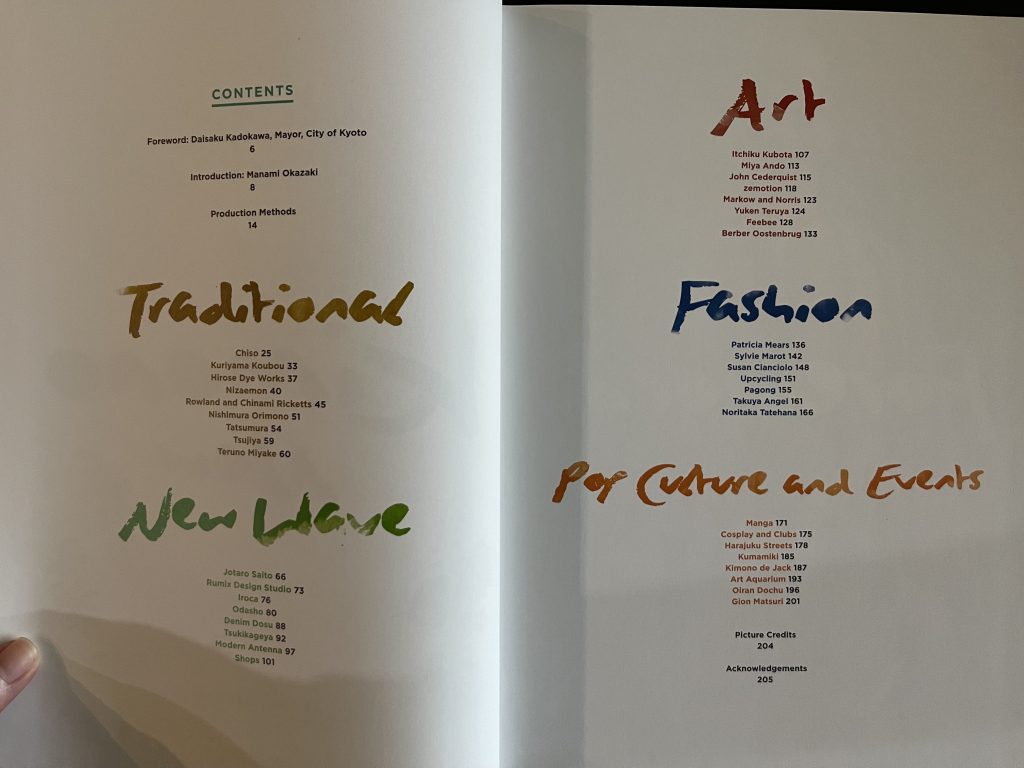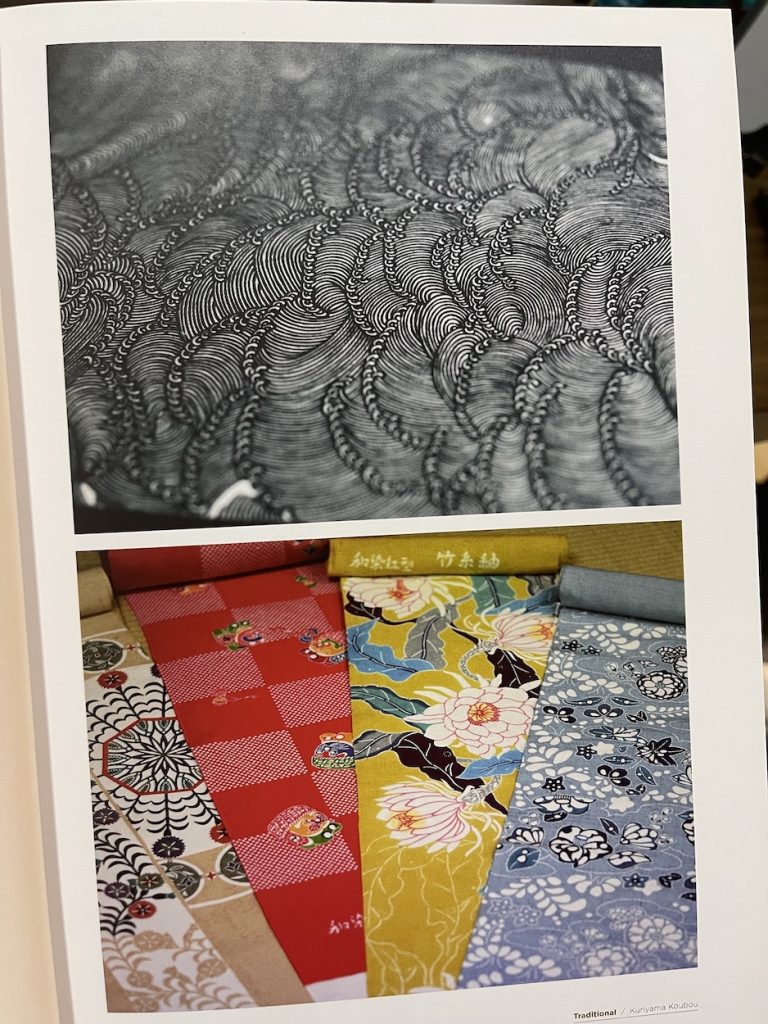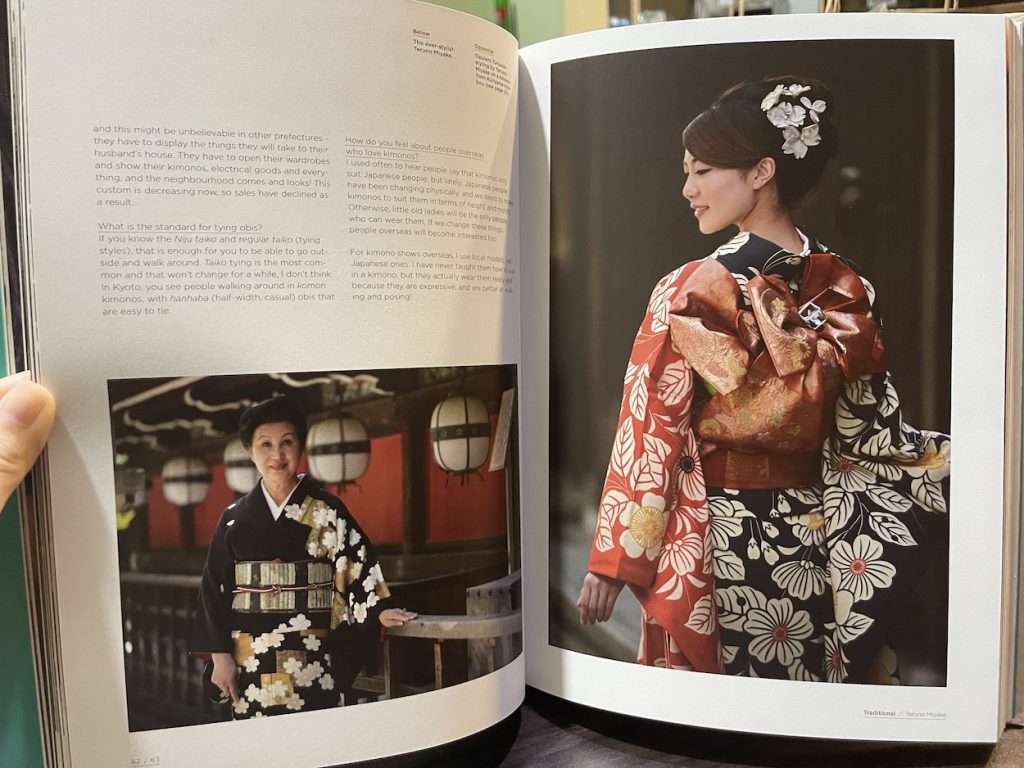I chanced upon this book at an online bookstore and immediately bought it because of its title. But when I read it, I was pleasantly surprised to find there was quite a lot of substance in this beautiful book!

Broken into five sections, Kimono Now aims to explore the world of the contemporary kimono (at least, contemporary at the time of publishing in 2015) through interviews with kimono makers and artists in the follow categories:
- Traditional
- New Wave
- Art
- Fashion
- Pop Culture and Events
Frankly, my favourite sections were the first two, which had more substantial interviews with people who were making kimonos the traditional way and with people who were trying new things. I liked that even the traditional kimono makers and dyers were trying new things – it’s the spirit of respecting the craft and its rules that keeps one traditional – so we can see how they collaborate with others to bring new life into the craft. Well actually, even the “new wave” of people still respected the traditions of kimono, they were just breaking the rules (like using denim) in a refreshing way.


One big thing I took away from these interviews is that kimono is for everyone. Quite a few of the interviews talk about how they see Kimono as a uniquely Japanese thing that they want foreigners to be able to appreciate. One traditional maker (who has been around for 15 generations) talked about how he wanted all women, including “European, American, and African women” to wear his kimono as well, since he was making women’s kimono for all. A kimono stylist talked about using local models for overseas shows and that the models wear the kimonos very well. Overall, there was a strong sense that the kimono industry wants to share the beauty of kimono with all instead of gatekeeping who can or cannot wear kimono.
(In fact, I found it amusing that there was slightly more gatekeeping between “traditional” and “new” kimono within the industry. The introduction mentioned that “many traditional houses now have a casual line as well, and none of the old-school interviewees in this book displayed any animosity towards new entrepreneurs. Rather, they see them as important in bringing a new clientele and as a bridge to the “real thing”.” The mention of the “real thing” fits in with my experience with kimono – none of the traditional kimono people care if you’re Japanese or not, what’s important is whether you wear it correctly and if you’re wearing what they deem as “traditional” kimono.
The last two sections were a little more hit-and-miss for me. Some of the interviews were quite good but others were short and felt like they were there to pad the sections. I liked the discussion on reusing and upycyling kimono (there was a great paragraph about how you never need to throw away kimono because you can reuse it until it becomes made into a cushion) but that was pretty short.
The last section on pop culture and events was the most disappointing to me. It was short and felt like it could have been cut out entirely – the only thing I liked was the discussion on how kimono is portrayed in manga and the pictures of the new styling at Harajuku. But compared to the weightier sections on the traditional and new wave, this section felt very insubstantial.
Overall, this is a beautiful book – I hope you got that from the pictures uploaded! I don’t know how much the industry has changed in the almost decade since the book was published but it has some great information that sheds light on the Japanese kimono industry from various angles.
P.s. as mentioned previously, I’ll be taking the rest of the month off to focus on reading and hopefully writing some posts as well! I still hope to be around reading and commenting on your posts!

Looks like this started well but didn’t end well. Great review!
The start was definitely stronger – I’ll probably be reading the start more haha
This book is super pretty!
Yes it is! I love all the pictures inside, perfect coffee table book haha
This looks like such a beautiful book!!
It was! I love the pictures, especially the close up photos of the fabric!
I would just want to look at this one for the photos. The ones you shared are so beautiful.
It’s worth getting for the photos! I think they are gorgeous, especially when you look at the traditional craft techniques!
[…] this is a fascinating book and one that I think pairs very nicely with Kimono Now, which is an even more recent look at kimono. While Kimono: A Modern History may not be for […]